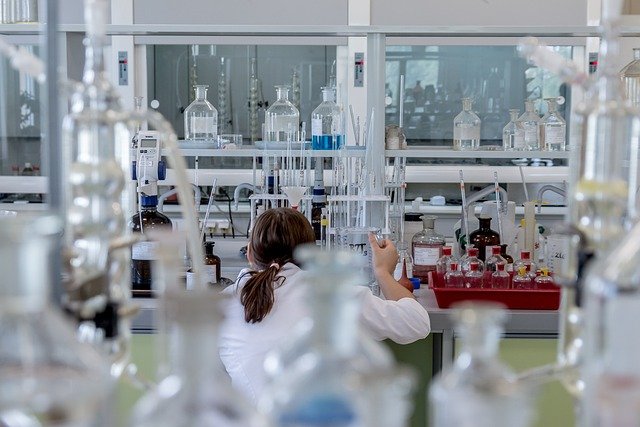Understanding Liquidity Detection in High Throughput Liquid Handling Systems
Liquidity detection represents a critical component in modern laboratory automation, particularly within high throughput liquid handling systems. This technology enables precise verification of fluid presence, volume measurement, and quality control during automated pipetting operations. As laboratories across the USA continue to scale up their testing capabilities, reliable liquidity detection becomes increasingly important for ensuring accuracy, preventing cross-contamination, and maximizing efficiency in high-volume testing environments. The integration of advanced detection methods has revolutionized how research facilities, clinical laboratories, and pharmaceutical companies manage their liquid handling workflows.

High throughput liquid handling systems have revolutionized laboratory workflows by enabling researchers to process vast quantities of samples with unprecedented speed and accuracy. At the heart of these sophisticated systems lies liquidity detection technology, which serves as the critical component ensuring proper fluid management and preventing costly errors in automated processes.
How Liquidity Detection Works in High Throughput Systems
Liquidity detection in automated systems operates through multiple sensing technologies working in tandem. Capacitive sensors monitor electrical field changes when liquid contacts the probe tip, while pressure-based sensors detect resistance variations during aspiration. Optical sensors use light transmission or reflection to identify liquid levels, and conductivity sensors measure electrical conductance between electrodes. These sensors communicate with control software that adjusts pipetting parameters in real-time, ensuring consistent volume delivery regardless of liquid properties or environmental conditions.
Key Applications for High Throughput Liquid Handling in USA Laboratories
American laboratories across various sectors utilize these systems extensively. Pharmaceutical companies employ them for drug discovery screening, processing thousands of compound libraries daily. Clinical diagnostics laboratories use automated liquid handlers for blood chemistry panels, immunoassays, and molecular testing. Academic research institutions rely on these systems for genomics studies, protein analysis, and cell culture applications. Biotechnology companies utilize them for enzyme assays, PCR setup, and sample preparation workflows that require precise volume control across multiple plates simultaneously.
Benefits of Advanced Liquidity Detection Technology
Advanced liquidity detection systems provide numerous advantages over manual pipetting methods. They eliminate human error in volume measurements, ensuring reproducible results across experiments. The technology prevents air bubble formation and cross-contamination between samples through intelligent probe washing protocols. Real-time monitoring capabilities allow immediate detection of clots, foam, or viscous samples that could compromise accuracy. These systems also reduce reagent waste by optimizing aspiration depths and preventing over-dispensing, while maintaining detailed audit trails for regulatory compliance requirements.
Challenges in High Throughput Liquid Handling US Market
Despite technological advances, several challenges persist in the American market. Integration complexity with existing laboratory information systems requires significant technical expertise and validation time. Maintenance costs can be substantial, particularly for systems handling corrosive or particulate-laden samples. Staff training requirements are extensive, as operators must understand both mechanical and software components. Regulatory compliance adds layers of documentation and validation protocols, especially in FDA-regulated environments. Additionally, the diversity of sample types and viscosities in modern laboratories demands increasingly sophisticated detection algorithms.
| System Type | Provider | Key Features | Cost Estimation |
|---|---|---|---|
| Automated Pipetting Workstation | Tecan | Multi-channel dispensing, integrated detection | $150,000 - $300,000 |
| High-Throughput Screening Platform | PerkinElmer | Rapid plate processing, advanced sensors | $200,000 - $500,000 |
| Liquid Handling Robot | Hamilton | Modular design, precise volume control | $100,000 - $250,000 |
| Microplate Dispenser | BioTek | Compact footprint, multiple detection modes | $75,000 - $150,000 |
Prices, rates, or cost estimates mentioned in this article are based on the latest available information but may change over time. Independent research is advised before making financial decisions.
Emerging Trends in High Throughput Liquid Handling USA Market
The American market is witnessing several transformative trends in liquidity detection technology. Artificial intelligence integration enables predictive maintenance and adaptive pipetting protocols based on historical performance data. Miniaturization efforts focus on reducing sample volumes while maintaining detection accuracy, particularly important for precious biological samples. Cloud connectivity allows remote monitoring and troubleshooting, reducing downtime and service costs. Sustainability initiatives drive development of eco-friendly reagents and energy-efficient systems. Additionally, modular designs enable laboratories to scale capacity incrementally rather than purchasing entirely new systems.
The future of liquidity detection in high throughput systems continues evolving as laboratories demand greater precision, speed, and reliability. These technological advances enable researchers to tackle increasingly complex scientific challenges while maintaining the accuracy and reproducibility essential for breakthrough discoveries. As automation becomes more sophisticated, liquidity detection will remain the cornerstone technology ensuring these systems deliver consistent, reliable results across diverse laboratory applications.




